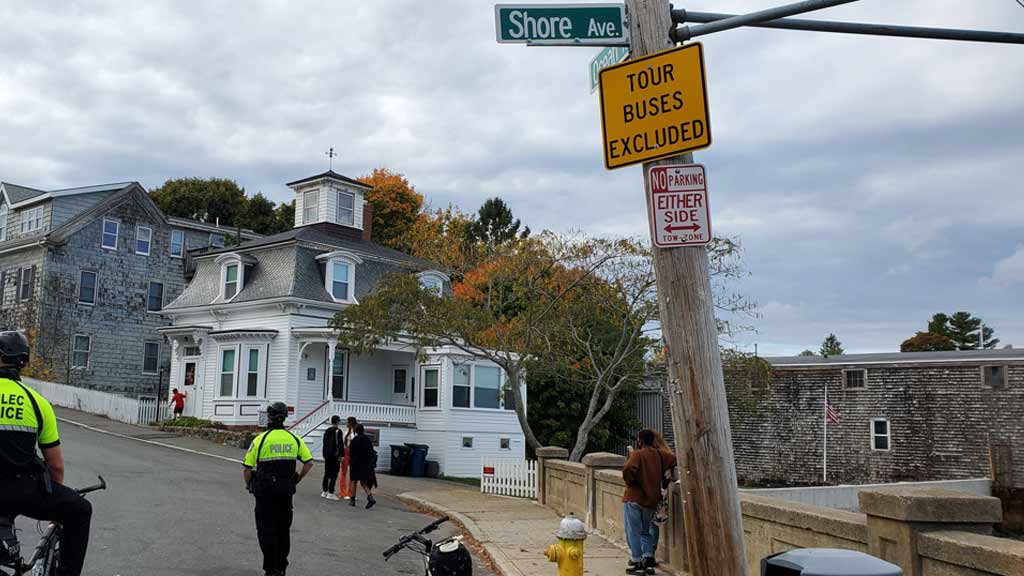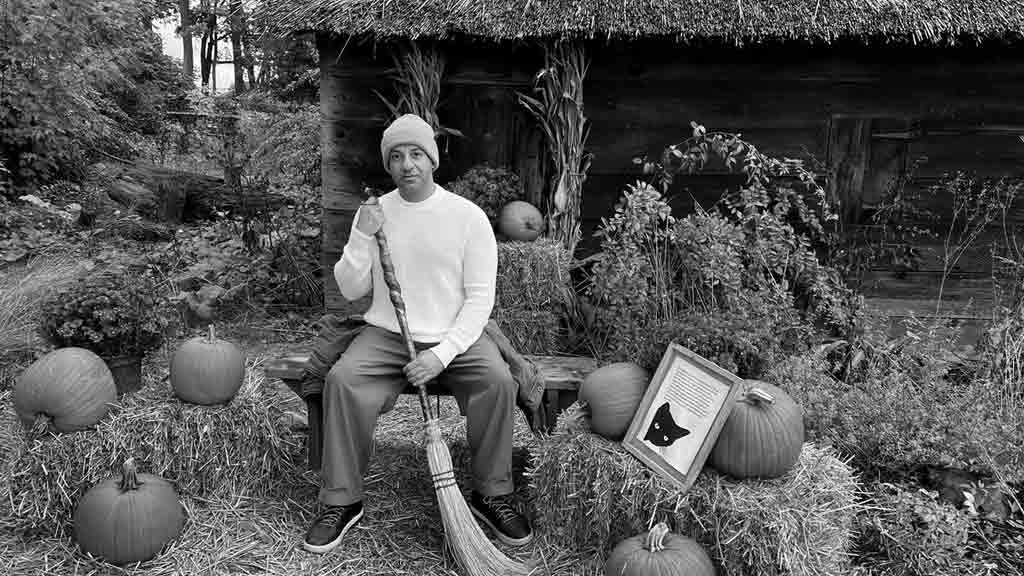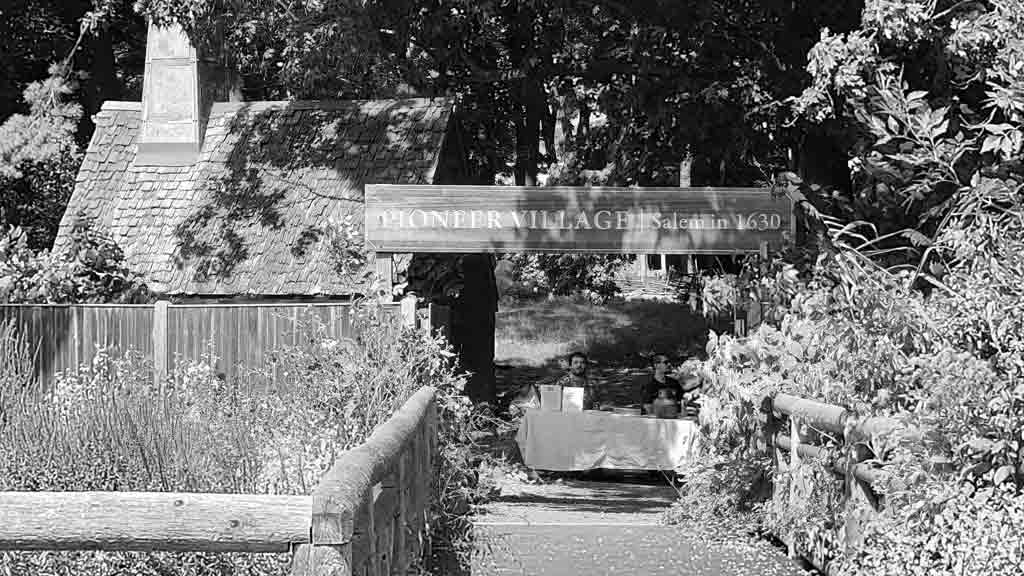Step back in time and immerse yourself in the rich history of Salem Pioneer Village. Discover the essence of early American life as you explore the thatched houses, pillories, and stocks that paint a vivid picture of the past.
With photos courtesy of the Boston Public Library, the Governors House stands as a testament to the bygone era, inviting you to delve into the roots of Massachusetts history.
Uncover the spirit of cooperation that inspired the city’s name, as detailed in the Salem Evening News archives.
From milestone moments to the 60th season opening, Pioneer Village’s journey is a tapestry woven with stories of resilience and progress.
As you stroll through the historic streets, guided by the Salem Chamber of Commerce, the echoes of the past beckon you to join in the narrative of Salem’s evolution.
Salem Pioneer Village Overview
The Salem Pioneer Village is a historical site located in Salem, Massachusetts, renowned for its depiction of early colonial life in New England.
Here’s an overview:
Historical Significance
Explore the historical significance of Salem Pioneer Village as a symbol of early American life. The village features thatched houses, pillories, and stocks that provide a glimpse into the past.
The Governors House at the village stands as a historical landmark representing Massachusetts’ rich history, offering visitors a unique experience rooted in colonial heritage.
Architectural Highlights
Discover the architectural highlights of Salem Pioneer Village, showcasing authentic structures that capture the essence of early American settlements.
The village’s buildings reflect the architectural style of the colonial era, preserving the heritage and culture of the Massachusetts Bay colonists.
Immerse yourself in the unique charm of Pioneer Village’s design and construction, taking a step back in time to experience the architecture of a bygone era.
Origins and Development
The origins and development of the Salem Pioneer Village trace back to the mid-20th century:
Establishment and Early Years

Pioneer Village in Salem, Massachusetts, was established to recreate early American life as it was in the 1630s. The village featured thatched houses, pillories, stocks, and various recreated workplaces like blacksmith and carpentry shops.
Around 2000 trees, shrubs, and vines were planted in the village, along with 2000 herbaceous plants, to recreate the natural landscape of the era.
Visitors can immerse themselves in the rich history of Salem by exploring the meticulously recreated buildings and landscapes at Pioneer Village. The attention to detail with thousands of plants truly brings the 1630s colonial experience to life.
Restoration Efforts
Over the years, Pioneer Village faced challenges, including neglect, vandalism, and natural disasters.
In 1954, the replica of the Arbella, one of the ships that brought the Massachusetts Bay colonists, was destroyed due to damage from a hurricane. Some buildings were lost to fire, and vandalism became a recurring issue.
By 1985, the city contemplated tearing down the site. However, a restoration effort in 1988 led to the reopening of Pioneer Village, highlighting the ongoing struggle to preserve this historical site amidst limited resources.
Cultural Impact
The Salem Pioneer Village has had a significant cultural impact, both locally and beyond:
Influence on Literature and Media

Exploring Salem Pioneer Village’s history can unveil a rich tapestry that has influenced various literary works and media representations.
The recreation of early American life in the 1630s, complete with thatched houses, pillories, stocks, and diverse workplaces, has served as a muse for writers, filmmakers, and artists alike.
The authentic structures within the village, such as the blacksmith and carpentry shops, have inspired narratives that delve into the hardships and daily life experiences of early settlers.
This immersive setting has been depicted in literature, movies, and TV shows, capturing the essence of colonial America and bringing history to life for audiences worldwide.
Furthermore, the challenges faced by Salem Pioneer Village, including neglect, vandalism, and natural disasters, have added layers of drama and resilience to its story.
These struggles, intertwined with restoration efforts and preservation initiatives, have become a part of the village’s narrative, providing a backdrop for tales of perseverance and cultural significance.
Role in Local Traditions
Salem Pioneer Village’s presence has not only shaped historical narratives but also played a vital role in the development of local traditions and community identity.
The portrayal of early American life in the village, with its recreated workplaces and natural landscapes, has become a cornerstone of cultural heritage for the Salem community.
Visitors and locals alike have embraced the traditions associated with Pioneer Village, participating in events, reenactments, and educational programs that celebrate the region’s past.
These activities foster a sense of connection to the land, history, and ancestors, fostering a shared cultural experience that strengthens community bonds.
Moreover, the ongoing efforts to preserve and protect Pioneer Village from potential demolition highlight the community’s commitment to honoring its heritage and safeguarding a living piece of history.
This dedication to cultural preservation underscores the village’s integral role in shaping local traditions and ensuring that future generations can continue to engage with the legacy of early American life in Salem.
Visitor Experience
If you visit Salem Pioneer Village, you’re in for an immersive experience that transports you back to early American life in the 1630s.
Through its authentic structures like thatched houses, pillories, stocks, blacksmith, and carpentry shops, you can witness firsthand the daily lives of the early English settlers.
Guided Tours and Activities

Exploring the village on a guided tour is the best way to maximize your experience. Knowledgeable guides lead you through the various buildings, providing insights into the historical significance of each structure.
You can witness skilled craftsmen at work in the blacksmith and carpentry shops, offering a glimpse into the trades that were essential for survival during that era.
In addition to guided tours, the village offers a range of activities to engage visitors of all ages. From interactive demonstrations to hands-on experiences, there are plenty of opportunities to delve deeper into the history and culture of early Salem.
Whether you’re interested in learning about traditional farming practices in the gardens or trying your hand at colonial-era games, there’s something for everyone to enjoy.
Educational Programs
For those looking to expand their knowledge further, Salem Pioneer Village offers educational programs tailored to students and history enthusiasts.
These programs delve into various aspects of colonial life, providing a comprehensive understanding of the challenges and triumphs faced by the early settlers.
Through interactive workshops and educational sessions, participants can gain a deeper appreciation for the rich history preserved within the village.
Whether you’re a history buff or simply curious about early American life, the educational programs at Salem Pioneer Village offer a unique opportunity to learn in an immersive and engaging environment.
By blending historical accuracy with hands-on learning, these programs bring the past to life and ensure that the legacy of Salem’s early settlers continues to inspire and educate visitors for generations to come.
Frequently Asked Questions
What is the significance of Salem Pioneer Village?
Salem Pioneer Village is a recreation of early American life in the 1630s, preserving authentic structures like thatched houses, pillories, and blacksmith shops.
Restoration efforts in 1988 saved the site from demolition, celebrating its cultural heritage impact on literature, media, and community events.
What can visitors experience at Salem Pioneer Village?
Visitors can enjoy guided tours, hands-on activities, and educational programs offering insights into colonial life and trades.
The village provides a unique and immersive learning environment, ensuring the legacy of Salem’s early settlers inspires future generations.
When was Salem Pioneer Village built?
Salem Pioneer Village was built in 1930 to mark Massachusetts’ tercentennial. It stands on three acres of land and showcases colonial architecture examples like dugouts, wigwams, thatched roof cottages, and the Governor’s Faire House.
How many buildings can visitors explore at Salem Pioneer Village?
Visitors can tour more than 30 buildings at Salem Pioneer Village on the 40-acre site. These structures were originally built between 1820 and 1910, restored, and furnished, including homes, shops, factories, a general store and post office, church, schoolhouse, and two mills.
Conclusion
Explore Salem Pioneer Village to immerse yourself in the rich history of early American life in the 1630s.
With authentic structures and educational programs, this site offers a unique experience that celebrates Salem’s cultural heritage.
Restoration efforts in 1988 preserved this historical gem, ensuring its legacy for future generations. From guided tours to hands-on activities, visitors can step back in time and gain insights into colonial life and trades.
Don’t miss the chance to be part of this living history experience that continues to inspire and educate. Salem Pioneer Village stands as a testament to the resilience and spirit of Salem’s early settlers.
Jaclyn Lowe